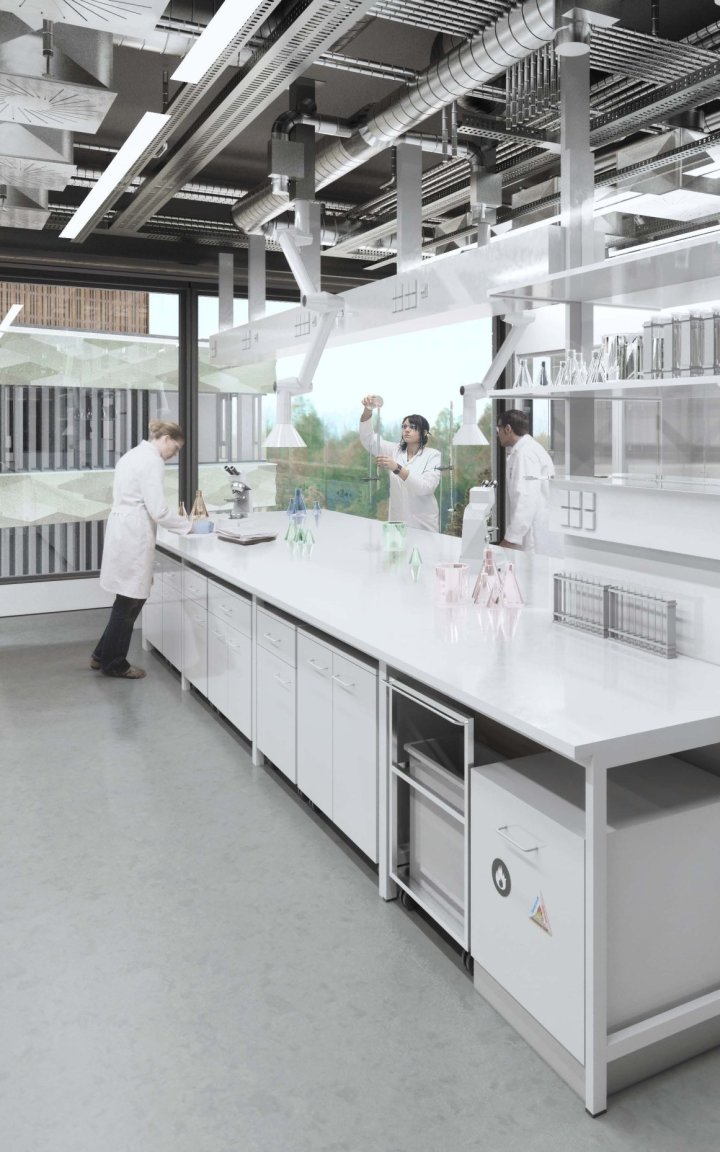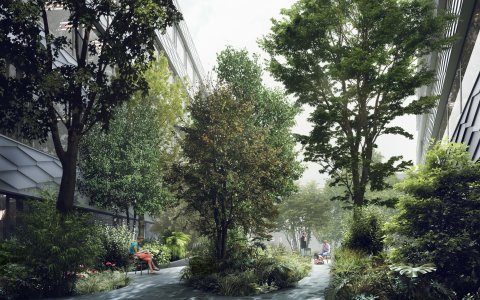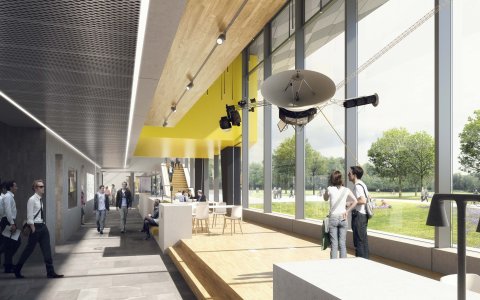
Feringa Building, University of Groningen
Zernike Campus lies on the northern edge of the city of Groningen, and takes its name from the first Nobel Prize laureate to be affiliated with the University of Groningen. Taking shape on the eastern edge of the campus is the Feringa Building, imminent home of the Faculty of Science and Engineering. It is named after the chemist Ben Feringa, who, in 2016, was also awarded the highest honour bestowed upon scientists. EHA is obviously proud to have been chosen to design a building set to bear the name of a Nobel Prize laureate. But there’s more to the project than that.
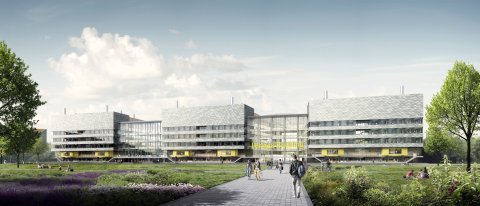
Project details
Name Feringa Building
Client Rijksuniversiteit Groningen
Location Groningen
Status Under construction
Delivery 2026
Architect Ector Hoogstad Architects
Architectural engineer Ector Hoogstad Architects
Building costs consultant IGG
Consultant building physics DGMR
Consultant lab design Dr. Heinekamp
Construction consultant ABT Wassenaar
Contractor Ballast Nedam
Installations De Groot-Lammerink
Installations consultant Arcadis
Project management Rijksuniversiteit Groningen Vastgoed & Investeringsprojecten
Projectmanagement design phases Stevens van Dijck
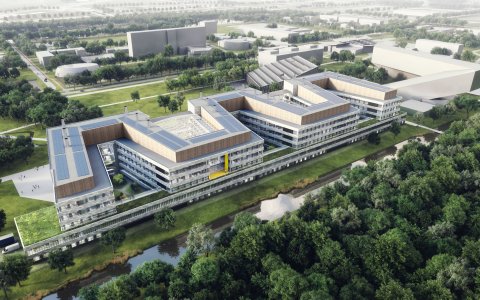

Impressively large
Take the stats and specs: a floor area of over 64,000 m2 destined for use by 2,500 students and faculty staff, three kilometres of lab tables, two cleanrooms, vibration-free laboratories, an auditorium with a seating capacity of over 400, a canteen, lecture rooms, offices, and more. Upon completion, it will be by far the largest building on campus and one of the largest structures in the Netherlands.
During his Nobel Lecture, Professor Feringa described his ideal university as a “playground for the youth”. Not only is this a beautiful conception of universities, but it also happens to correspond with our view of knowledge centres as places that stimulate mutual inspiration and the exchange of ideas necessary for making discoveries that advance humanity. Architecture can be instrumental in this regard, both as an enabler of collaborative activity and as a catalyst for creative thinking.
Transparent and connective
EHA translated the university’s ambitious and wide-ranging brief into a design that reflects the human scale and fits in with its surroundings. We achieved this by designing the building in the form of a zigzag, the succession of V-shaped wings creating trapezoidal intermediate spaces that lend themselves to communal use. One of these becomes an atrium, and the other four are under development by Karres + Brands as “secret gardens”. The zigzagged form allowed us to create large unobstructed floors and made it possible to have all of the laboratories and offices overlook the courtyards. It also allows for additional wings should more space be required in the future.
The 240-metre-long structure will include a double-height walkway that runs the length of the building on the side overlooking the campus and containing entrances, reading rooms, a canteen, and access to the building’s stairways and lifts. It will be spacious, airy and transparent, admit abundant natural light and boast a welcoming ambience; in other words, a place where students and staff from the seven disciplines within it can meet and socialise in a relaxed setting.
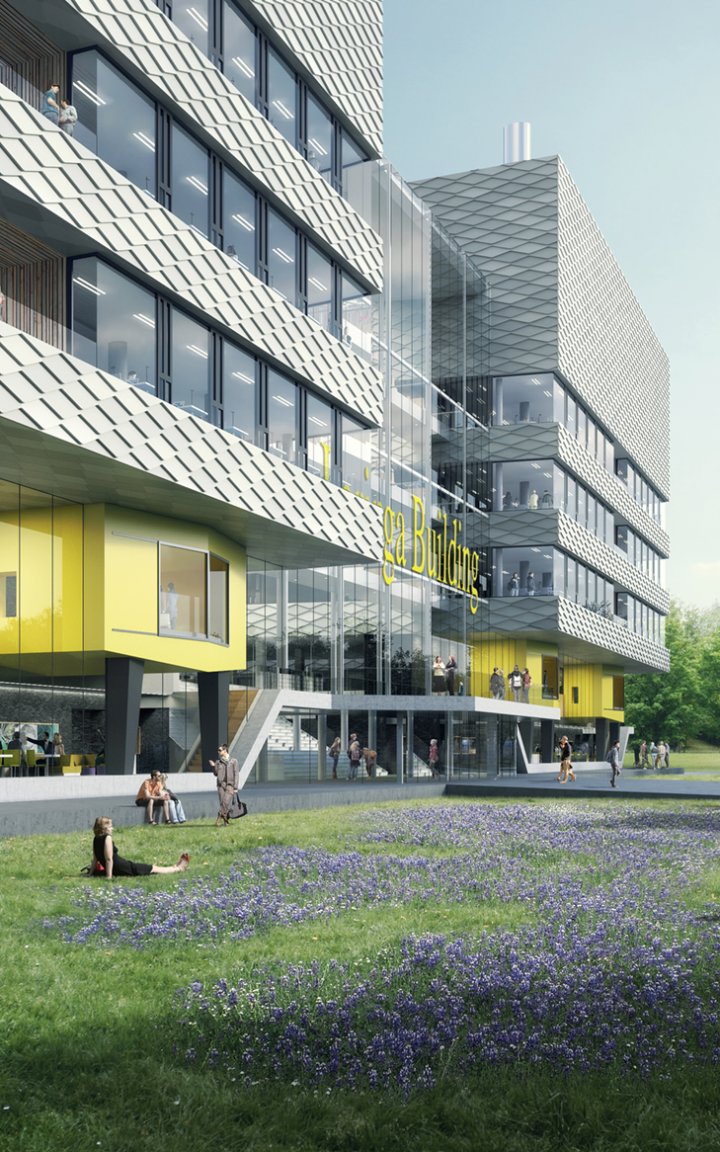
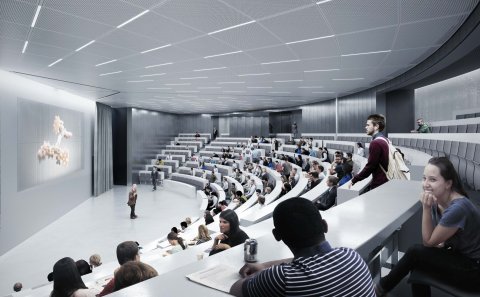

An atrium with extras
Wide stairways lead to the first floor of the atrium, which can be used for events and exhibitions. Beneath the atrium is a large auditorium that can be divided into two smaller halls. The foyer outside looks straight onto the so-called “research cluster”, the part of the building housing the most state-of-the-art facilities, such as the cleanrooms and the vibration-free laboratories.
The upper floors provide readily adaptable spaces for laboratories and offices. The former are situated on the north-facing end of the building, to keep them from being exposed to the sun. The top floor is a power plant for clean energy generation, and the roof is covered with several hundred square metres of solar panels.
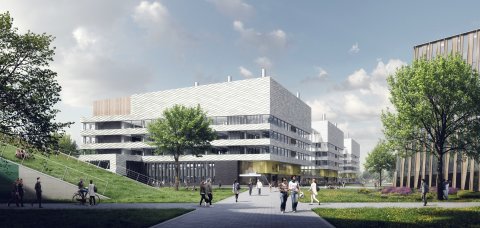
Earthquake-resistant
Constructing a building for scientific use is always a technically complex undertaking, but doing so in Groningen presents additional challenges, as the area is highly susceptible to earthquakes. The building is therefore designed to be earthquake-resistant, and has the capacity to absorb huge amounts of seismic energy. Earthquake-resistant measures include the use of lightweight exterior cladding, which appear as diamond-shaped aluminium panels separating the windows between floors and forming a scaly pattern around the building.
The Feringa Building is going up in stages. Once stage one is complete, the first occupantswill move in and their vacated building will be partially demolished to allow the second stage of construction to commence. There is clearly a lot yet to come, but the University of Groningen has more than enough reason to be excited already.
